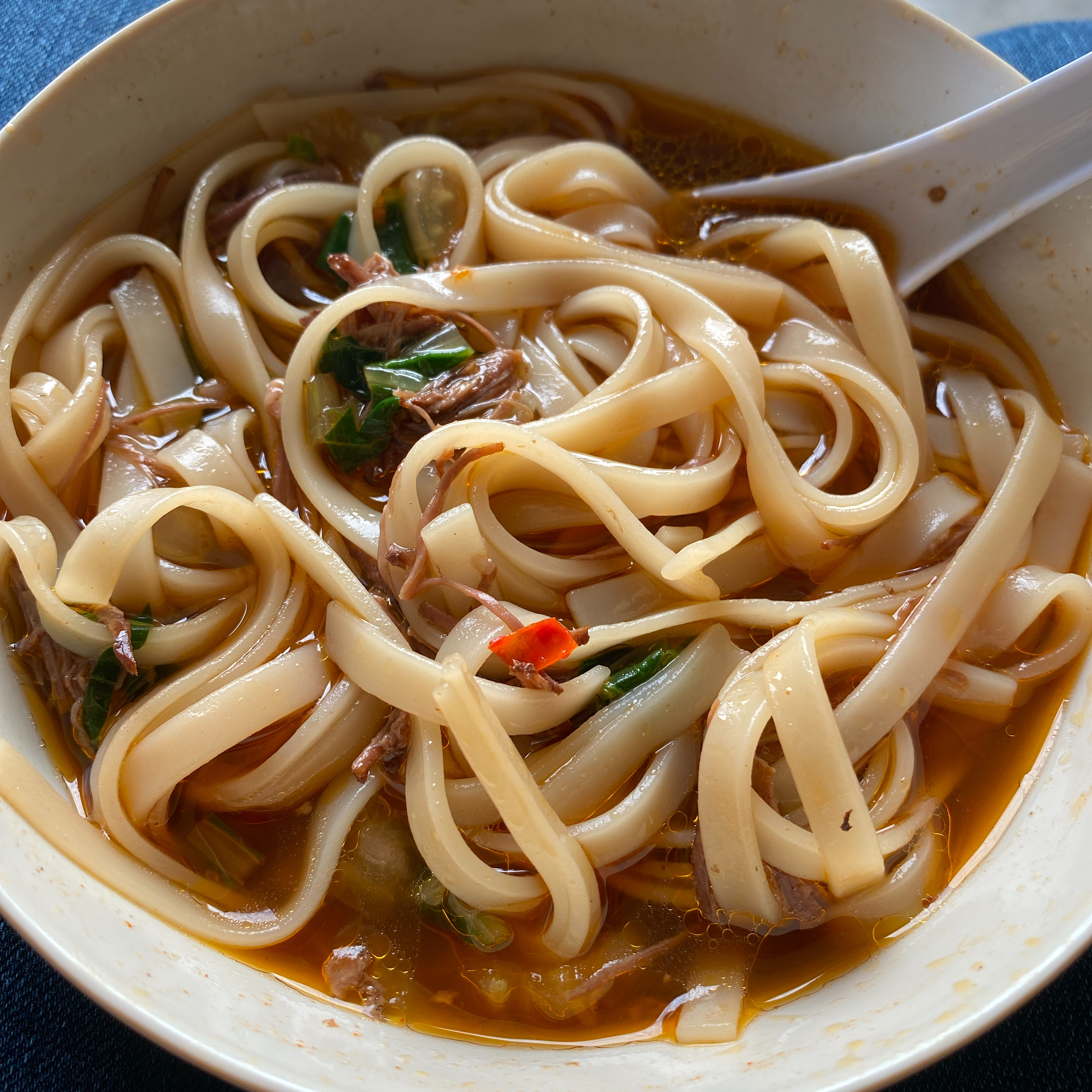Taiwanese Spicy Beef Noodle Soup

A classic Taiwanese/Chinese dish! Tons of flavor and spice! One of my favorite noodle dishes of all time in a slow-cooker version. A bowl of this in the winter evenings will warm you right up!
INGRIDIENT
DIRECTION
Step: 1
Place beef in a stockpot and pour in enough water to cover; bring to a boil. Remove from heat and drain.
Step: 2
Pour vegetable oil into a slow cooker; add beef, 8 cups water, beef broth, soy sauce, rice wine, green onions, brown sugar, garlic, chile peppers, chile paste, ginger, star anise, and Chinese five-spice powder.
Step: 3
Cook on Low for 8 to 9 hours.
Step: 4
Transfer beef to a bowl with a slotted spoon. Strain broth into a bowl. Discard solids.
Step: 5
Bring a pot of water to a boil; add bok choy for 30 seconds. Remove and run under cold water. Cook udon noodles in the boiling water until tender yet firm to the bite, about 4 minutes. Drain.
Step: 6
Divide noodles among serving bowls and top with beef, baby bok choy, and broth. Top with Chinese pickled
Step: 7
.
NUTRITION FACT
Per Serving: 482 calories; protein 27g; carbohydrates 41.5g; fat 22g; cholesterol 62.6mg; sodium 2366.1mg.
The name of “stew” can process to both a dish and a cooking method. Stewing makes slowly cooking piece of meat, vegetables or beans in a flavorful water based . It’s similar to braising, but it makes have a few notable differences. The meat is chopped into smaller pieces but of being processing menu all of it , and the liquid completely covers the contents in a stew as different to a braise’s halfway full . When meat or vegetables are cooked using this method, the resulting dish is called stew.
Stew has a perception for making a rib-sticking eating process that warms you up on a cold , winter day. It’s right that ; a bowl of classic beef stew does have warming featured food , but stew’s cozy factor more than a way beyond protecting you from the cold . It’s all about those soft and chunks of meat and vegetables, swimming in a thick, ultra-rich gravy. The way they come together make the ultimate comfort food, no matter the weather.





